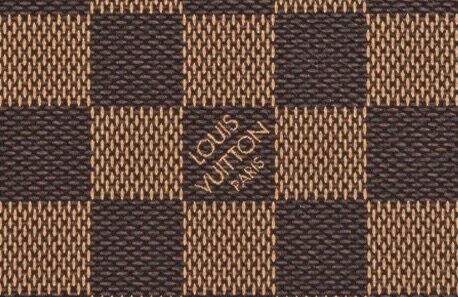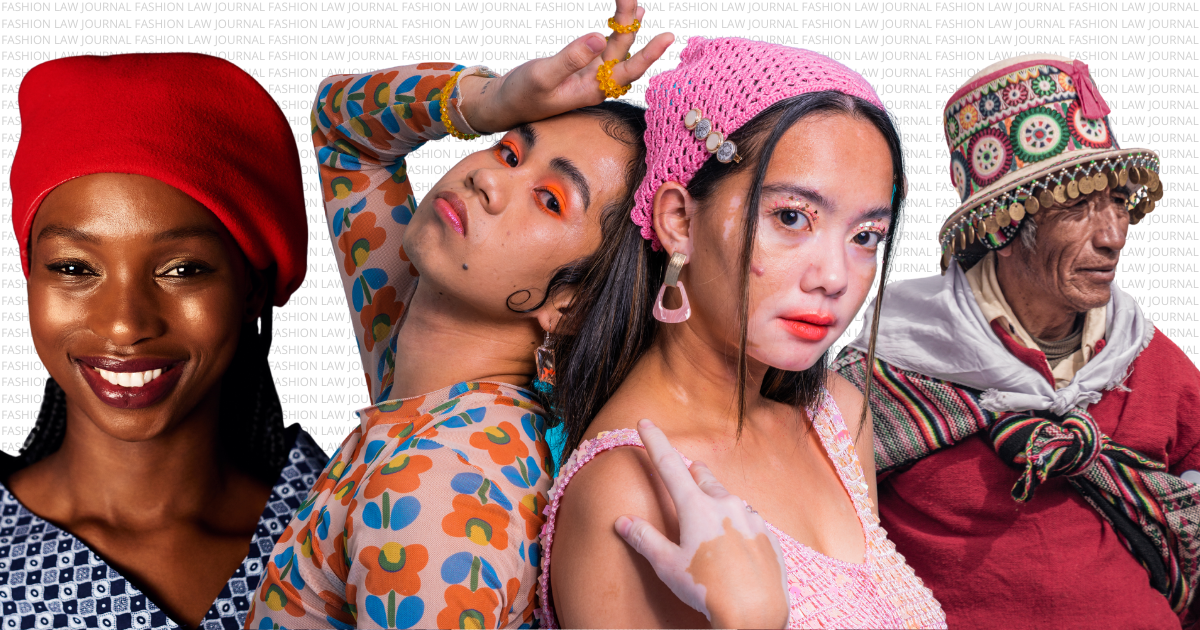Introduction
Today, information technology is an essential component of the fashion industry. Information technology is used for everything from employee attendance to shipment dispatching. Nowadays, information technology is critical in the textile industry. Any manufacturing facility employs the four M’s: Men, Material, Machine, and, of course, Money. Managers must focus on synchronizing all of these factors and developing synergies with internal and external organizational operations in order to achieve organizational success. With increased competition, businesses are enlisting the help of IT to improve their Supply Chain Management (SCM) and use it as a competitive advantage. To summarise, many textile companies are leveraging technological power to add value to their operations.
The fashion business has progressed to the point where owning high-quality branded outfits and gear, whether casuals, ethnic, wedding dress, purses, watches, or footwear, has become a matter of prestige. Customers are continuously drawn to branded products, but because they are expensive, they are not accessible to everyone. Furthermore, this leads to product counterfeiting—whether it’s the design, name, raw materials utilised, or even the tiniest detail—all of which may be replicated and offered to customers at a lower price.
For years, the popularity of wearing branded things grew to the point that buyers would steal the designs, copy them, and sell them for a low price. Furthermore, this resulted in a significant loss for the designers, prompting the demand for protection. Designers ensure that as soon as they complete a project, it is labelled and protected by trademarks, copyrights, or even designs.
When a design is materialised from pure imagination and its originality is obvious from its very existence, it is immediately classified as an artistic work under Section 13 of the Copyright Act of 1957. Section 15 of the Copyright Act deals with copyright in works that are registered or capable of being registered under the Designs Act, 2000. For starters, a design registered under the Designs Act 2000 will not be eligible for Copyright Act protection.Then, once any article to which the design has been applied has been reproduced more than fifty times by an industrial process by the owner of the copyright or, with his license, by any other person, copyright in any design that is capable of being registered under the Designs Act but has not been registered shall cease. As a result, design registration and copyright over an article are incompatible, according to the Copyright Act of 1957.
The definition of design is defined in Section 2 (d) of the Design Act of 2000. “Design” is defined as “only the features of shape, configuration, pattern, ornament, or composition of lines or colors applied to any article, whether in two dimensional or three dimensional or both forms, by any industrial process or means, whether manual, mechanical, or chemical, separate or combined, that appeal to and are judged solely by the eye in the finished article, with certain exceptions.”
Many fashion items will no longer be available in traditional retail stores as the retail landscape transforms. The mall has already been demolished in the fashion industry as consumers embrace online shopping, and e-commerce is ravaging department and apparel stores alike.
E-commerce in India and the Indian Information Technology Act: The Indian Information Technology (IT) Act, 2000 provides much-needed legitimacy to the services and validity of e-commerce platforms in India. Such an advertisement for electronic records or electronic signatures, which are required for paperless trading.
The Ministry of Electronics and Information Technology has also established the Information Technology Rule, 2000, which prescribes safe and secure processes and procedures for these business models to follow. This also makes it easier for customers and merchants to protect sensitive personal data or information. The penalties for disclosing information in violation of a legitimate contract is laid down in Section 72A of the Information & Technology Amendment Act, 2008.
The Information Technology (Intermediary Guidelines and Digital Media Ethics Code), which defines the roles and responsibilities of social media intermediaries, has already passed in 2021.
Furthermore, the European Union’s General Data Protection Regulation (GDPR) went into effect in 2018. To protect the data of EU citizens, which affects practically all firms and organizations who do business with the EU around the world.
Why does the Fashion Industry need IT support?
Long Procurement Time
The procurement process takes much longer in the traditional textile industry. As a result, retailers must forecast demand and identify consumption trends much earlier. A lack of clarity about the future can result in either an early stock out, a delay, or an overstock.
Supply Chain Incompetency
With the desire to go global, apparel and textiles are encountering inefficiencies in the various processes involved, ranging from designing, developing samples, obtaining approval, manufacturing, dispatching, and payment procedures. The total time required can be extended to a year or more. According to our calculations, production accounts for only ten to twenty percent of total time. The remainder of the time is spent on information processing from one end to the other.
The trajectory of information technology development has intersected every application in the textile industry. IT has inserted intelligence at every node of the textile supply chain, from improving textile manufacturing performance to tighter process control.
Step into Global grade
It is true that going global opens up a plethora of opportunities as well as threats in terms of competition, shifting trends, and other environmental changes. It necessitates the efficient and rapid management of all types of information.
E Commerce
E-commerce can be B2B (Business To Business) or B2C (Business To Consumer) (Business To Customer). B2C commerce refers to direct selling to consumers via the Internet. While B2B marketplaces are defined as neutral Internet-based intermediaries that focus on specific business processes, host electronic marketplaces, and use various market-making mechanisms to mediate business transactions. B2B appears to be more forward-thinking than B2C.
E Retailing
The textile behemoths are expanding their offering to include an Internet shopping component. It has had an impact on their distribution and warehouse infrastructure. Retailers’ supply chain strategies have shifted as a result of their online presence. High-volume products with consistent demand are stocked in local stores, whereas low-volume products are stocked centrally for online purchase.
Companies prefer to reach out to customers directly by closely scrutinising their tastes, preferences, habits, and purchasing patterns. Instead of waiting for customers to come into their stores, retailers send them e-mails with special offers. The Internet has facilitated a rapid response system. It is possible to have an automatic customer replenishment system using web-enabled technology.
How is AI influencing brands?
From the invention of the sewing machine to the rise of e-commerce, fashion has always been at the forefront of innovation. Fashion, like technology, is forward-thinking and cyclical.
And, today, fashion technology is advancing at a faster rate than ever before.
Robots that sew and cut fabric, AI algorithms that predict fashion trends, virtual reality mirrors in dressing rooms, and a slew of other innovations demonstrate how technology is automating, personalising, and speeding up the fashion industry.
To demonstrate this, IBM collaborated with Tommy Hilfiger and The Fashion Institute of Technology (FIT) Infor Design and Tech Lab on a project called Reimagine Retail. According to Steve Laughlin, general manager of IBM Global Consumer Industries, the goal is to highlight how AI capabilities can give retailers an edge in terms of speed, as well as prepare the next generation of retail executives with new skills leveraging AI in design. The AI system’s knowledge was then returned to human designers, who could use it to make informed design decisions for their next collection.
“The machine learning analysis gave us insights about the Tommy Hilfiger colors, silhouettes and prints that we couldn’t begin to consume or understand with the human mind. This enabled the FIT Fashion Design students to take their inspiration from Americana or popular fashion trends and marry that with the ‘DNA’, if you will, of the Tommy Hilfiger brand across those dimensions to create wholly new design concepts,” explains Michael Ferraro, executive director of FIT’s Infor Design and Tech Lab.
Brands could use the system to create personalized clothing for a person based solely on their engagement with visual content. On a broader scale, it could enable a brand to forecast broader fashion trends based on historical data from its entire user base. Finally, the predictions could be used to guide the design of a product or an entire label. The next era of fashion is all about customization and forecasting. Algorithms will become trend hunters as data sets grow in size. Regulators are currently unable to keep up with the pace of change in fashion and technology. That is why we require fashion legislation, and we require it quickly. Because the future is here.
Resources-
- The Design Act,2000 https://ipindia.gov.in/designs-act-2000.htm
- Copyright Act,1957 https://copyright.gov.in/documents/copyrightrules1957.pdf
- Information Technology Act,2000 https://www.meity.gov.in/content/information-technology-act-2000
- Rachel Arthur, (Jan 15, 2018) Forbes https://www.forbes.com/sites/rachelarthur/2018/01/15/ai-ibm-tommy-hilfiger/?sh=75ee23178ac0

















